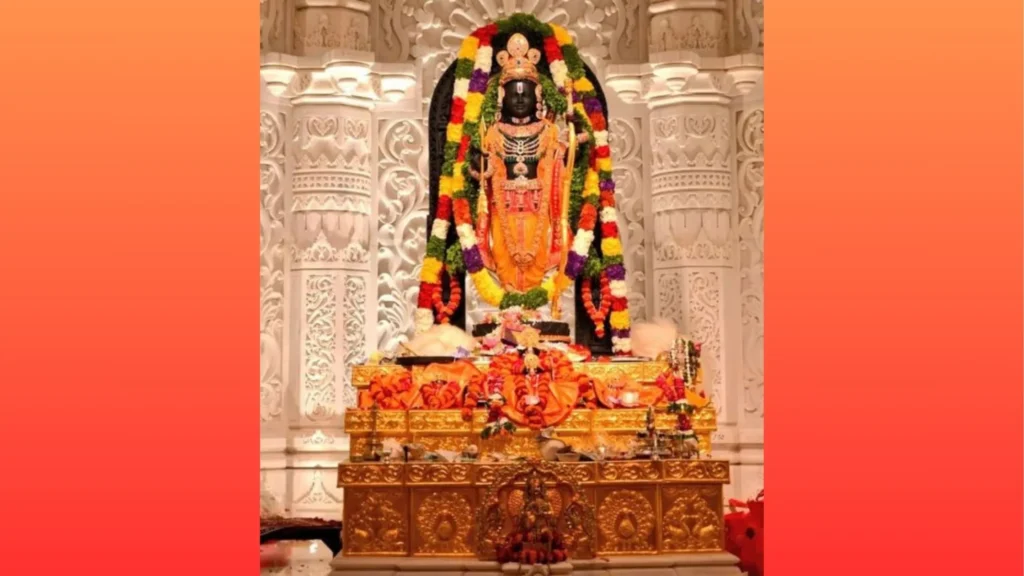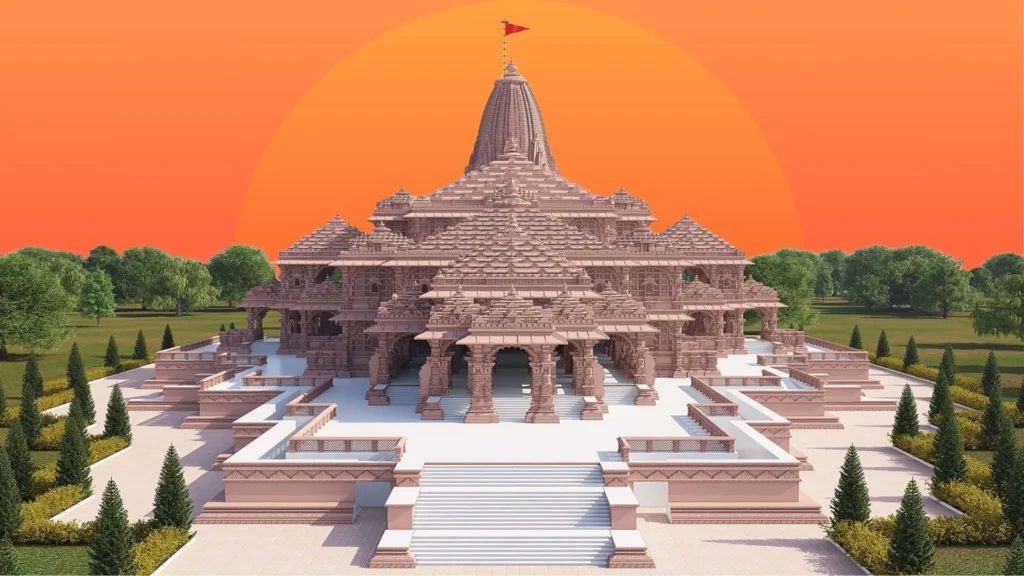The construction of Ram temple in Ayodhya is a historical and religious project which has been in the works for decades. The temple is dedicated to Lord Rama, one of the most revered deities in Hinduism, and is built on the site where an ancient Rama temple is said to have stood and was demolished by the Mughal invader Babar.
Table of Contents
ToggleShri Ram Janmabhoomitemple inauguration –
The temple’s was inagurated by the Indian prime Minister Shri Narendra Modi on January 22, 2024. The Ram Lalla idol was unveiled during the grand ‘Pran Pratishtha’, which involved hour-long rituals led by Prime Minister Narendra Modi. After the “Pran Pratishtha” ceremony, PM Modi performed the ‘aarti’ of the Ram Lalla idol at the Shri Ram Janmabhoomi Temple in Ayodhya. The Ram Temple inauguration was attended by thousand of devotees and eminent personalities from every corner of India.
Important facts about Shri Ram Temple, Ayodhya –
The temple is designed in the traditional Nagara style of architecture, with a three-storey structure, 392 pillars and 44 gates.
The temple is built of stone and wood, without using any iron or steel, to ensure longevity and durability. It is expected to last for more than 1000 years.
The temple complex will be spread over 70 acres, of which 70% area will be green. It will also have pavilions for dance, colour, prayer and kirtan along with other temples dedicated to various Hindu deities.
The construction of the temple is estimated to cost approximately 15 billion rupees ($180 million), funded by donations from devotees and organizations. Engineering firm Larsen & Toubro is responsible for construction, which began 15 years ago.
The inauguration of the temple is expected to be a grand event, with lakhs of devotees and tourists flocking to Ayodhya to witness this historic occasion. The Uttar Pradesh government has made elaborate arrangements for the safety, transportation, accommodation and sanitation of the visitors. Indian Railways has also started special trains and coaches to facilitate the travel of pilgrims.
The construction of the temple has also boosted the local economy and employment, as many workers, artisans and suppliers have been involved in the project. The design and materials of the temple are taken from different parts of India, such as Rajasthan, Gujarat, Karnataka, Tamil Nadu and Odisha. The stones of the temple are being carved by the Sompura family, a lineage of temple architects who have been practicing the craft for over 15 generations.
The inauguration of the temple has also led to a cultural and spiritual revival in Ayodhya, as several initiatives have been taken to promote the heritage and identity of the city. The city, once known for its narrow streets crowded with Hindu monks and pilgrims, with street vendors selling miniature idols of Rama, is now known for its modern infrastructure and state-of-the-art services for visitors. It has been completely redesigned.
In the first phase, the modest airstrip of Ayodhya has been developed into a huge international airport with a runway of 2200 meters. The city is also adorned with murals, sculptures and paintings depicting the life and stories of Rama.

Important facts about the idol of Ramlala –
The idol is called Balak Ram, as it depicts the deity as a five-year-old boy in a standing posture.
The idol is made of a three billion-year-old rock called Krishna Shile or black schist, which has a smooth surface texture and a sky-blue colour.
The idol was sculpted by Arun Yogiraj, a Mysuru-based sculptor, who carved out the 51-inch idol from the rock.
The idol is dressed in a yellow dhoti and a red ‘pataka’ or ‘angavastram’, which are made of Banarasi fabric and embellished with pure gold ‘zari’ and threads, featuring auspicious Vaishnav symbols.
The idol was consecrated on January 22, 2024 by Prime Minister Narendra Modi in a grand ceremony, attended by over 7,000 guests, including celebrities, sportspersons, businessmen and industrialists.
- The idol was placed in the sanctum sanctorum of the Ram temple, which is expected to be opened to the public on January 23, 2024.

More interesting facts about the idol of Ramlala –
- There will be four idols of ramlala in the new temple, depicting Lord Ram as a five-year-old child.
- The new idol is 51 inches tall, carved from black stone, and adorned with gold jewellery. It was sculpted by Arun Yogiraj from Karnataka, and selected for its blend of innocence, divinity, and royalty.
- The old idol is five to six inches tall, and was placed at the site of the former mosque. It will be installed in front of the new idol, facing it. It will be called Utsavmurti, and will be used for all the festivals related to Lord Ram.
- The other two idols are also 51 inches tall, one carved from dark stone by Ganesh Bhatt, and the other from white marble by Satya Narayan Pandey. They will be enthroned on the first and second floors of the temple, with proper rituals.
- The new idol was consecrated by Prime Minister Narendra Modi on January 22, 2024, in a grand ceremony attended by thousands of devotees and dignitaries.
Visit one of the grandest hindu temples to have been constructed in the modern history. A place where Shee Ram was born and bought up. A place of sacred devotion to one of the most important gods for all Indians.
Actual location of the Sree Ram Janmabhoomi Mandir, Ayodhya
Jai Shri Ram
- Jai Bajrang Bali meaning | बजरंगबली नाम का मतलब
- How to Call Lord Hanuman for Help?
- Sri Karya Siddhi Anjaneya Swami Temple in Girinagar, Bengaluru
- Who is the Biggest Enemy of Lord Hanuman Ji?
- मंगलवार को हनुमान जी का शुभ दिन क्यों माना जाता है?
- Bajrangbali in Hindi | बजरंगबली हिंदी में
- 7 must visit Hanuman Temple Bangalore
- 5 Famous Temples of Lord Hanuman in India
- Sri Kattu Veera Anjaneya Temple | ಶ್ರೀ ಕಟ್ಟು ವೀರ ಆಂಜನೇಯ ದೇವಸ್ಥಾನ
- श्री राम जन्मभूमि मंदिर अयोध्या
- हनुमान जी को प्रसन्न करने के लिए क्या करें? | What to do to please Hanuman ji?
- बजरंगबली नाम का मतलब क्या है? | Bajrangbali meaning in hindi
- Karya Siddhi Hanuman Mantra | कार्य सिद्धि हनुमान मंत्र
- Hanuman Gayatri Mantra
- Hanuman Vadvanal Stotra in Sanskrit | श्री हनुमान वडवानल स्तोत्र
- Lord Hanuman Ashtottara | Sri Anjaneya Ashtottara
